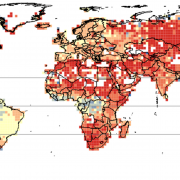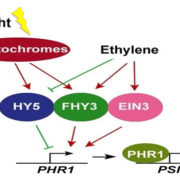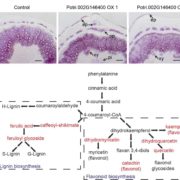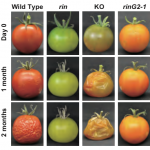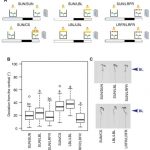Heat tolerance regulated by an ancient jasmonate signaling pathway (Curr. Biol)
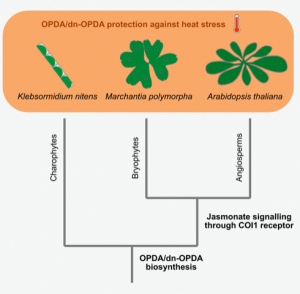 Jasmonate responses are regulated not only by the well-studied pair of the bioactive hormone jasmonoyl-isoleucine (JA-Ile) and the receptor COI1, but also the cyclopentenone OPDA and the JA-Ile precursor dn-OPDA can activate jasmonate signaling. However, the OPDA/dn-OPDA signaling and their physiological roles are not fully understood. To dissect the COI1-independent OPDA/dn-OPDA responses, Monte, Kneeshaw, et al. capitalized on recently developed resources: the liverwort Marchantia polymorpha coi1 mutants and the eudicot Arabidopsis thaliana opr3-3 coi1 double mutants, both of which produce OPDA/dn-OPDA but are unable to perceive JA-Ile, as well as the charophyte alga Klebsormidium, which does not have COI1 but can produce OPDA/dn-OPDA. The authors found that OPDA/dn-OPDA can enhance heat stress tolerance in both M. polymorpha and Klebsormidium in a COI1-independent manner. Transcriptome analysis showed that COI1-independent OPDA responses, including heat stress responses, were conserved among M. polymorpha, Klebsormidium, and A. thaliana. An author noted on Twitter “Once upon a time our growth chamber broke, the temperature increased, and only the Marchantia plants grown on OPDA survived.” This serendipitous finding enriches our understanding of an ancestral role of jasmonate signaling that may have been key to land plant colonization. (Summary by Tatsuya Nobori) Current Biology 10.1016/j.cub.2020.01.023
Jasmonate responses are regulated not only by the well-studied pair of the bioactive hormone jasmonoyl-isoleucine (JA-Ile) and the receptor COI1, but also the cyclopentenone OPDA and the JA-Ile precursor dn-OPDA can activate jasmonate signaling. However, the OPDA/dn-OPDA signaling and their physiological roles are not fully understood. To dissect the COI1-independent OPDA/dn-OPDA responses, Monte, Kneeshaw, et al. capitalized on recently developed resources: the liverwort Marchantia polymorpha coi1 mutants and the eudicot Arabidopsis thaliana opr3-3 coi1 double mutants, both of which produce OPDA/dn-OPDA but are unable to perceive JA-Ile, as well as the charophyte alga Klebsormidium, which does not have COI1 but can produce OPDA/dn-OPDA. The authors found that OPDA/dn-OPDA can enhance heat stress tolerance in both M. polymorpha and Klebsormidium in a COI1-independent manner. Transcriptome analysis showed that COI1-independent OPDA responses, including heat stress responses, were conserved among M. polymorpha, Klebsormidium, and A. thaliana. An author noted on Twitter “Once upon a time our growth chamber broke, the temperature increased, and only the Marchantia plants grown on OPDA survived.” This serendipitous finding enriches our understanding of an ancestral role of jasmonate signaling that may have been key to land plant colonization. (Summary by Tatsuya Nobori) Current Biology 10.1016/j.cub.2020.01.023
[altmetric doi=”10.1016/j.cub.2020.01.023″ details=”right” float=”right”]



